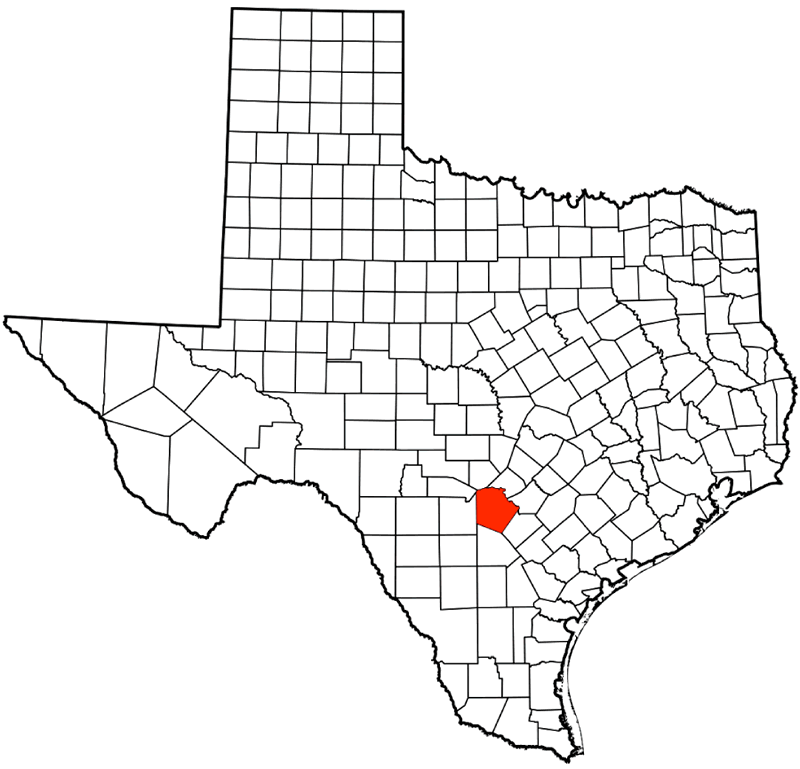
Meet The Living Spider That No Longer Exists…
Officially, the Braken Bat Cave meshweaver spider no longer exists. Yet, the species can still be found in certain locations in Texas, going by a different name: the Madla Cave meshweaver.
Read on to find out more about this fascinating, endangered spider.
Braken Bat Cave – Not Just for Bats
The Braken Bat Cave meshweaver spider belonged to the genus Circurina and had the scientific name Circurina venii. The spider was found in just two caves in western Bexar County, Texas.
The species was discovered by arachnologist Willis J. Gertsch in 1992. Due to its rarity, the arachnid was included in the Federal List of Endangered and Threatened Wildlife. However, all that changed in the summer of 2022.

On August 23rd, 2022, the USA Fish and Wildlife Service (USFWA) announced that the Braken Bat Cave meshweaver spider would be delisted from the Federal List of Endangered and Threatened Wildlife, not because it was no longer endangered, but because it was no longer considered to be a species at all (source).
Previous research had shown that the Braken Bat Cave meshweaver spider was, in fact, the same species as the Madla Cave meshweaver spider Circurina madla. The USFWA’s announcement simply reflected these findings.
Of course, this doesn’t mean that the Braken Bat Cave meshweaver spider simply vanished; today it goes by a different name, joining the existing (small) population of Madla Cave meshweaver spiders.
The Braken Bat Cave meshweaver spider’s habitat was designated critical habitat. Although the species no longer exists, the habitat is still protected, because another endangered species, a small beetle, Rhadine infernalis, resides there.

In fact, even the spider’s listing in the Federal List of Endangered and Threatened Wildlife remains unchanged, because the Madla Cave meshweaver spider is also listed as endangered under the Endangered Species Act of 1973 (source)
Madla Cave Meshweaver Spider
The Madla Cave meshweaver spider is a small, cave-dwelling arachnid found only in eight or nine caves in Bexar County, Texas. The spider is cream-colored, and between 4.8 and 6.7 mm / 0.19 and 0.26 inches in length.
As a result of its subterranean existence, the Madla Cave meshweaver spider lacks functional eyes. The loss of vision is a characteristic of many troglobites (species that live in underground habitats such as caves).
The Madla Cave meshweaver is one of 140 spiders of genus Cicurina, a group known as the cave meshweavers. The group is part of the dwarf sheet spider family, Hahniidae.

Spiders belonging to this family build delicate, sheet-like webs made of extremely fine silk.
A spider’s silk is produced by organs known as spinnerets positioned at the end of the opisthosoma (the hind-part of the spider’s body).
One characteristic of dwarf sheet spiders (including the Madla Cave meshweaver) is their six spinnerets, which are positioned in a row, with the outermost spinnerets being longer than the others.
You can find out more about arachnids on this page: Arachnids – The Ultimate Guide
You can find out more about spiders on this page: Is a Spider an Insect?
Characteristics of Cave Dwelling Animals
The pale color and blindness of the Madla cave meshweaver spider is a result of its having evolved to live underground.
The Madla cave meshweaver spider is a troglobite: a species that lives in underground habitats such as caves.
Troglobites, be they arachnids, insects, fish or amphibians, often exhibit a similar set of characteristics. These include: either the absence of Eyes or a reduction in eye size; lack of pigmentation; and highly-developed non-visual senses, such as hearing, touch or smell. Many troglobites also have adaptions for coping with low oxygen environments.
Loss Of Vision
Vision is an unnecessary attribute for animals that spend their entire lives underground; these animals are better off evolving heightened senses of (e.g.) touch or smell.
Lack of Pigmentation
In dark caves, there is no need for pigmentation either to provide visual camouflage or for protection against sunlight. Many troglobites, therefore, have lost body pigmentation and are pale to the extent that they look albino.
Absence of Eyes or Reduction in Eye Size
Cave dwellers are often blind; many troglobites either have tiny eyes or lack eyes entirely. This is simply because, for a species living in an environment devoid of all light, there is no need for vision; the energy spent in growing eyes is better used elsewhere.
Loss of pigmentation and sight are the primary evolutions of cave dwellers.
Highly Developed Hearing Touch and Smell Senses
Cave-dwelling species’ sensory mechanisms are not dependent on light, and as a result are often enhanced to compensate for the lack of vision.
Whether the animal is a predator or prey, heightened senses of sound, smell and touch are beneficial for staying alive in the dark.
Adaptions due to oxygen-depletion
Plants require light to photosynthesize, and are therefore unable to grow in caves and other underground habitats. As a result, the air in caves is often low in oxygen, which is a by-product of photosynthesis.
Cave-dwelling animals therefore often have various adaptations for living in a low-oxygen environment. These include: low metabolism, slow movement and being less territorial.
Lack of oxygen is also partially responsible for troglobites’ lack of vision; ocular senses require a lot of energy, the expenditure of which requires oxygen.
The post Meet The Madla Cave Meshweaver Spider – An Endangered Texas Arachnid appeared first on Active Wild.